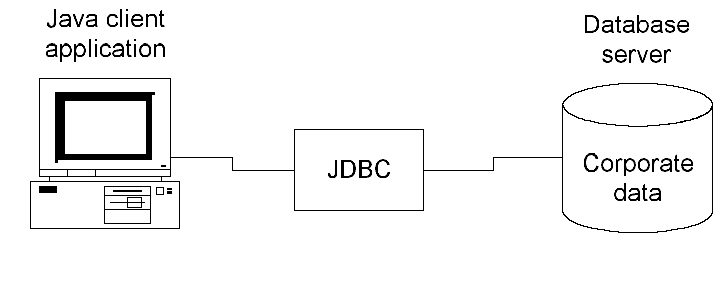Client/server architecture means an application that connects directly to a database. Business logic and the user interface are implemented together on the client. Your application may also have business logic as stored procedures in the database.
In Java applications, the database connection is made using JDBC.

The Java client application uses a transaction object to make a database connection. A query object or DataWindow object makes the SQL query and manages the result set. To present the data in the user interface, you can use the DataWindow JavaBeans component or a data-bound control.
The PowerJ Database wizard makes it easy to create database forms and generates much of the required code for instantiating the transaction and query objects and managing the data binding.
JDBC is a standard that describes how to connect to and talk to a database from within a Java application or applet. JDBC is a set of Java interfaces, not actual Java classes. The JDBC interface (also called the JDBC API) provides Java programmers with a uniform interface to a wide range of relational databases.
To use JDBC, you need a JDBC driver that implements the methods specified in the interface.EJB Server provides the Sybase high-speed, shared-memory driver for this purpose.